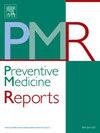费城按种族和收入划分的COVID-19疫苗接种的空间不平等
IF 2.4
3区 医学
Q2 PUBLIC, ENVIRONMENTAL & OCCUPATIONAL HEALTH
引用次数: 0
摘要
目的疫苗接种是预防重症COVID-19的关键干预措施,但在美国接种疫苗的最初几个月,社区种族-民族组成和社会经济地位在疫苗接种方面存在广泛的空间不平等。为了探讨这些不平等是否以及如何持续存在,我们研究了费城社区收入、种族构成和COVID-19疫苗接种覆盖率之间的关系,并描述了2021年和2022年不平等的趋势。方法利用费城公共卫生部提供的费城46个社区(邮政编码)的疫苗接种数据,估计2021年4月18日、9月26日和11月21日以及2022年4月3日、6月26日和8月7日的疫苗接种覆盖率。我们估计并比较了社区收入水平和种族-民族构成的平均疫苗接种覆盖率。我们通过估计按日期接种疫苗的绝对和相对差异来探讨覆盖率的不平等。结果covid -19疫苗接种覆盖率因社区收入水平和种族构成而有很大差异。在所有日期,与中等收入、低收入、混血和非西班牙裔黑人社区相比,高收入和非西班牙裔白人社区的发病率更高。社区之间疫苗接种的绝对和相对差异随着时间的推移而缩小,但一直持续到2022年8月。本研究为在大流行期间(包括在疫苗接种期间)针对低收入和非西班牙裔黑人社区制定政策的重要性提供了证据,因为他们经历了因COVID-19造成的不成比例的感染、住院和死亡率负担,并且疫苗接种率较低。本文章由计算机程序翻译,如有差异,请以英文原文为准。
Spatial inequities in COVID-19 vaccination in Philadelphia by race and income
Objective
Vaccination is a key intervention to prevent severe COVID-19, but in the early months of vaccination availability in the United States, there were wide spatial inequities in vaccination by neighborood racial-ethnic composition and socioeconomic status. To explore whether and how these inequities persisted, we examined the association between neighborhood-level income and racial-ethnic composition and COVID-19 vaccination coverage in Philadelphia, and described trends in inequities in 2021 and 2022.
Methods
Using vaccination data for 46 Philadelphia neighborhoods (zip codes), from the Philadelphia Department of Public Health, we estimated vaccination coverage on April 18th, September 26th, and November 21st of 2021, as well as April 3rd, June 26th, and August 7th of 2022. We estimated and compared average vaccination coverage by neighborhood-level income and racial-ethnic composition. We explored inequities in coverage by estimating absolute and relative differences in vaccination by date.
Results
COVID-19 vaccination coverage varied substantially by neighborhood-level income and racial-ethnic composition. On all dates, rates were higher in high income and non-Hispanic White neighborhoods compared to medium-income, low-income, mixed, and non-Hispanic Black neighborhoods. The absolute and relative differences in vaccination between neighborhoods narrowed over time but persisted through August 2022.
Conclusions
This study provides evidence for the importance of policies that target low-income and non-Hispanic Black neighborhoods during pandemics, including during vaccination rollout, as they have experienced a disproportionate infection, hospitalization, and mortality burden due to COVID-19 and experienced lower vaccination rates.
求助全文
通过发布文献求助,成功后即可免费获取论文全文。
去求助
来源期刊

Preventive Medicine Reports
Medicine-Public Health, Environmental and Occupational Health
CiteScore
3.90
自引率
0.00%
发文量
353
 求助内容:
求助内容: 应助结果提醒方式:
应助结果提醒方式:


